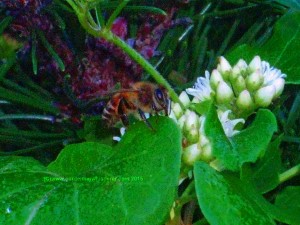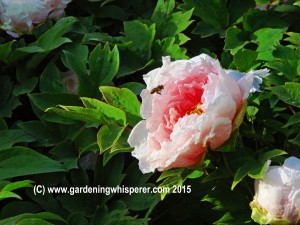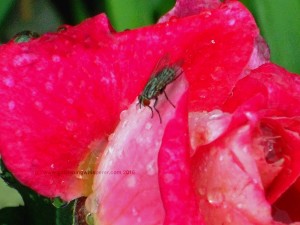Twenty Eight days until spring and the pollinators return, Are you ready???
Category Archives: Insects
History of Bees
History of Bees
Bee History
 We are in the dog days of summer and many summer flowers are the stopping off place for many insects that also enjoy the summer flowers. Bees are looking for pollen and nectar that help maintain and build their hives over the winter. Honeybees are one of the first animals that were domesticated by man. Honey and beeswax have long been a sought after products by man. These little workhorses are good at turning pollen and nectar into a food fit for Kings and the wax was used for many things. It does not go bad without refrigeration and stays good for some time. It was also fermented to make mead a drink talked about in ancient times used by Vikings and Roman Gods. The wax used as a preservative and a source for light.
We are in the dog days of summer and many summer flowers are the stopping off place for many insects that also enjoy the summer flowers. Bees are looking for pollen and nectar that help maintain and build their hives over the winter. Honeybees are one of the first animals that were domesticated by man. Honey and beeswax have long been a sought after products by man. These little workhorses are good at turning pollen and nectar into a food fit for Kings and the wax was used for many things. It does not go bad without refrigeration and stays good for some time. It was also fermented to make mead a drink talked about in ancient times used by Vikings and Roman Gods. The wax used as a preservative and a source for light.
The honeybee is not native to North America and was brought to the colonies along with other English livestock to help settle the United States. They were difficult to bring over onboard ships but once here they established and were foraging ahead of the colonization of America. As agriculture grew and we moved west honeybees went also giving homesteaders food and sugar to use to survive the stark and bleak farm homesteads.
There is a law of supply and demand that at about a radius of 4 miles is what a bee can travel and bring pollen back to hive. The forage out in this radius and bring back the best pollen and nectar that can be gotten in the shortest time but the easiest to harvest. If you live on the outer region of this radius bees may be at your flowers one day and somewhere else the next. It is wise to grow several types of flowers that bloom at different times ensuring a constant supply of pollen and nectar.
Honey bees are under attack for many reasons, but planting many types of flowers where they can get pollen and nectar to make honey and beeswax to live through the winter will help. The horticultural crops that they pollinate in spring and early summer have long gone and now they need more summer and fall flowers a must to sustain their health and the health of the hive.
©Ken Wilson & Gardening Whisperer 2015
This entry was posted in Horticulture Tips, Insects and tagged Honey, Horticulture tips, Native, Pollen on September 12, 2015, by Ken Wilson. Edit
Bees and Pollinators
Bees and Pollinators
 There have been many emotional talks on the decline of bees in the past few years. The graphic representations show that bee hives have declined since the mid-forties. Then when several massive bees kill in the past have happened fingers were pointed at insecticides. In order to get massive headlines, they place blame at the newest insecticide, Neonics. GET RID OF ALL INSECTICIDES. Well, that is a blown up headline-grabbing statement and not a real solution to the problem.
There have been many emotional talks on the decline of bees in the past few years. The graphic representations show that bee hives have declined since the mid-forties. Then when several massive bees kill in the past have happened fingers were pointed at insecticides. In order to get massive headlines, they place blame at the newest insecticide, Neonics. GET RID OF ALL INSECTICIDES. Well, that is a blown up headline-grabbing statement and not a real solution to the problem.
Let us address the biggest factor in the decline of beehives since the mid-forties one (1) there is less demand for honey and beeswax, these were both used for the war effort. The second (2) would be the demographics of America have changed; the population has moved out rural areas to the cities. Along with this families began to place alien plants around there houses ones that did not attract bees as they feared they would been sting.
With this movement has come another factor land went from land used for farming to suburban home dwellings. Thus the removal of so much of the native bee habit has made it harder to endure. The removal of this diversity of plant material has had a great impact on bee survival.
The next headline-grabber In the past ten (10) years is a struggle of what is called Colony Collapse Disorder, this is a broad term for several ailments, one (1) deformed wing virus two (2) nosema fungi, three (3) Varroa mites, four (4) small hive beetles, and four (insecticides). This remains a concern for beekeepers but these problems are not insurmountable and they have several solutions.
To me, the greatest problem facing “THE BEES” is a disease that shall be known as “Stupid”. All applicators both commercial and privet applying any product to plants must read and follow directions correctly. There has been more damage to the bee population from “Stupid” than any other cause.
In a talk given by Joe Bischoff of AmericanHort, he shares facts that give several possible solutions that have been thought out where concerned will win.
Neonics & Pollinators
https://www.youtube.com/watch?v=HJRqOde_zuE
Many individuals are focusing on this problem. One of the solutions is having pollination zones for both Honey bees. This will help native insects, honey bees and butterflies. If these zones are packed with native plants it will
help the diversity of all life. There are areas in all communities that need sprucing and adding to the beauty of America. “America In Bloom” (AIB) should also take up this cause.
At least people are looking at this dilemma from a more realistic and positive resolution to this crisis. Also looking into what plants attract bees more would also help homeowners and city officials. It is sort like that movie saying if you plant it, they will come.
© Ken Wilson, gardeningwhisperer.com 2015
This entry was posted in Horticulture Tips, Insects and tagged America In Bloom, Bees, Colony Collapse Disorder, Honey Bees, Native, native plants., Pollinators on May 6, 2015, by Ken Wilson. Edit

